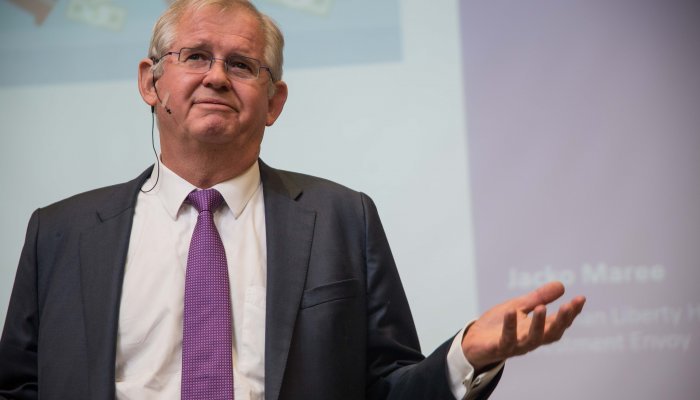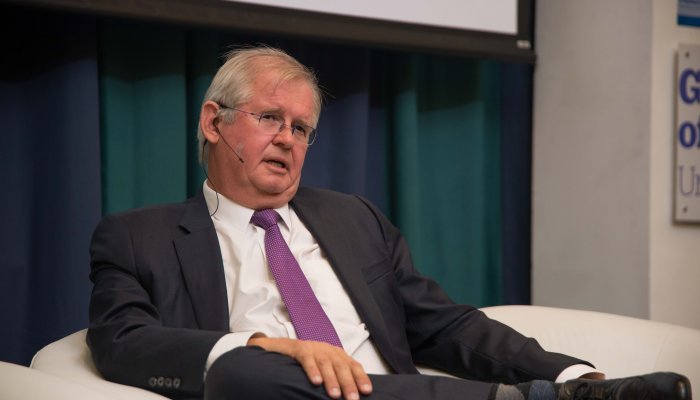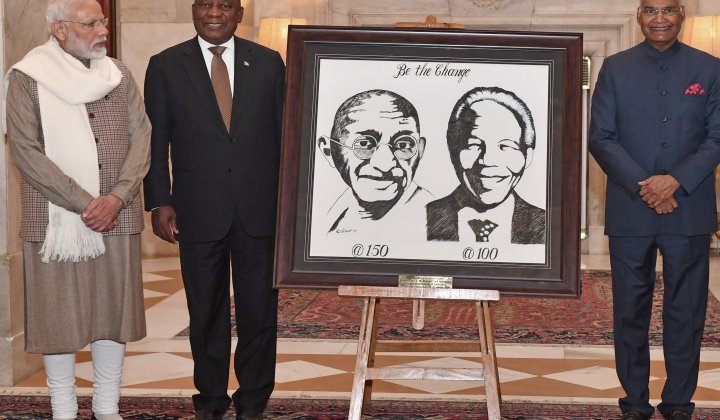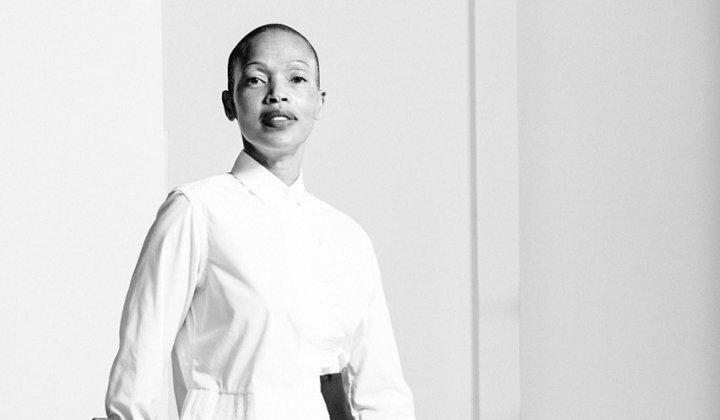The last time Cyril Ramaphosa spoke formally about his drive to attract $100 billion in investments into South Africa over the next five years was at the State of the Nation Address opening Parliament in February.
Ramaphosa told Parliament: “The levels of growth that we need to make significant gains in job creation will not be possible without massive new investment.” The president then reminded Parliament that the investment summit held in October had attracted about R300 billion in investment pledges from South African and international companies.
“To prove that our investment conference was not just a talk shop where empty promises were made, as we speak, projects to the value of R187 billion are being implemented, and projects worth another R26 billion are in the pre-implementation phase,” said Ramaphosa.
Before this, late in January, Ramaphosa and one of his investment envoys had the opportunity to address the Indian prime minister and that country’s business leaders while on a state visit in India. On that trip, the president only managed to get Narendra Modi’s government to lift its ban of and resume trade with Denel, South Africa’s weapons manufacturer.
India is one of the world’s largest buyers of weapons, and Denel had been trying to get back on its good books since it was blacklisted after being accused of bribery. No weapons sales were agreed upon.
Official red tape has long been identified as one of the major impediments stifling the economy.
The last investment summit Ramaphosa had arranged, to which he referred in Parliament, was in October. Chinese businessman and former Alibaba Group executive chairman Jack Ma was the star of that show. Not since the State of the Nation Address has the president organised another investment forum, or addressed the matter of the investment drive to attract investors into the country.
No longer a priority?
A few questions that should be foremost in the minds of South Africans are: Why has the matter of attracting investments fallen off the government’s list of top priorities? Was the investment drive just a publicity gimmick by a new president to distract from the corruption of state capture? Has the looming election distracted the government from the investment drive? Or does the lack of reliable electricity provision put paid to any notion that SA is ripe for investment?
Perhaps the last question is the most important. Since February, electricity supplier Eskom unexpectedly plunged the country back to power rationing as many of its generating assets have broken down. The depth and frequency of load shedding took the whole country by surprise since Eskom and the public enterprises minister had in November pledged that Eskom’s power stations would be fixed through the December holiday. The president, at that particular moment on a visit overseas, reacted with “anger and shock”.
Since then, load shedding has become a daily occurrence. The matter of lack of reliable electricity provision, and the broken state of Eskom, is the most critical. The utility provides about 95% of the electricity consumed in South Africa. The rest is imported from Mozambique and from independent power producers. Without reliable electricity, no investment – new or existing – can be viable. But there are many other critical issues that may have distracted focus from the investment drive. For example, in South Africa, general election season tends to bring a halt to many government programmes.
Economist Azar Jammine is sceptical of even the R300 billion in commitments that have come through from the November investment summit. “Had there be any hope these investments would be realised, would this not have been included in the National Treasury’s budget forecasts in February?” asks the Econometrix chief economist.
In its Budget Review, the National Treasury’s macroeconomic outlook estimates a gross fixed capital formation of growth of 1.5% for this financial year, which will rise to 2.1% and 3% by the financial year 2021. In monetary terms, these figures amount to about R900 billion by the last year in the forecast. This, according to Jammine, does not take into account even the R300 billion investment pledge, let alone hopes of realising any of the R1.2 trillion targeted by Ramaphosa.
“The budget did not show any hopes of a boost in fixed capital expenditure as a result of the projected injections. I do not see it in the Treasury's estimates of fixed capital formation,” says Jammine. “Even the R300 billion that was pledged in October would have been a huge boost to the capital formation estimates. We are also not seeing this in the real economy. I am downbeat about how it will be realised.”
Where's the money?
The president, through investment envoy Trudi Makhaya, acknowledges the pledges are just that at this stage. And that more work needs to be done to convert the pledges into reality and investment projects on the ground. “The past few months have been about discussions on where these opportunities lie, and the government has gone to do some work to realise those,” says Makhaya. This includes the creation of a governmental one-stop shop whose aim is to cut the red tape. “The president will present to the investor community a progress report on how we have been able to adopt policies and regulations aimed at cutting the red tape and to improve the investment climate over the last few months.”
This is done to simplify the ease of doing business, and to cut the time it takes to start a business in SA. “InvestSA is an investment agency that drives cutting the red tape by placing the Department of Trade and Industry (DTI), the Environmental Affairs and the Home Affairs departments all in one room to deal with the blockages there,” says Makhaya.
Official red tape has long been identified as one of the major impediments stifling the economy. South Africa ranks 82nd out of 190 countries in the World Bank’s annual Doing Business report. Ramaphosa says the government has set itself a target of being among the top 50 global performers within the next three years.
So far the Saudi Arabian and Chinese governments have been among the leading nations to make commitments to invest. A total of $25 billion in investment commitments have been announced by these countries. “The government is working with these countries to identify the projects into which they can plant the investments,” says Makhaya. She says the next layer of opportunities will be extended to private sector players. Other private sector investors have committed to investing another $10 billion in SA. “The success of the investment drive can only be judged by the amount of investments that actually materialise,” says Makhaya.
...all the envoys seem less busy than a year ago...
The Big Five
Makhaya is one of five investment envoys the president appointed last year, to assist him with the drive to get foreign investors to look at these shores anew. The others are former Standard Bank chief executive officer Jacko Maree, former finance minister Trevor Manuel and former deputy Mcebisi Jonas, as well as businesswoman Phumzile Langeni. Langeni accompanied the president on the India state visit and had the opportunity to impress Indian businesspeople with potential opportunities in South Africa.
It is, however, not difficult to notice that all the envoys seem less busy than a year ago, at the height of the Ramaphoria that followed Ramaphosa’s election to head the African National Congress, followed by his ascent to the Union Buildings less than two months later.
“South Africa had then a real chance to change course and turn sentiment in favour of the economy with the Ramaphoria. But since then we have lost a lot of that,” says Jammine, rather gloomily.
Among the key issues that have since dented trust in the government and confidence in the economy is the ANC’s talk of the nationalisation of the Reserve Bank and the bid to amend the Constitution to allow the expropriation of property without compensation. “Of course I don’t believe there will be a blanket expropriation of property or nationalisation of the Reserve Bank, but investors from outside South Africa see it differently,” says Jammine.
Low growth – or no growth
While Ramaphosa highlighted a renewed growth in foreign direct investment to R70 billion during the first three quarters of 2018, from a low R17 billion in 2017, Jammine is not convinced that is translating to investments in the real economy. “The data I am seeing shows that the real economy is shrinking on the ground. Even the 1% economic growth projected for this year may be in jeopardy,” says Jammine.
Jammine may have a point. In the third quarter of 2018, South Africa recorded a gross domestic product growth of 2.6%, which was followed by a growth of 1.4% in the last quarter. This accounted for a total of 0.8% for the whole of the year, according to Statistics South Africa. The situation will not change much this year either.
The National Treasury forecasts a growth of 1.5% this year, which would rise to 3.1% by 2021. The government’s estimates are more optimistic than those of the World Bank, which forecasts growth of 1.3% this year. In the World Bank’s estimate, growth will only top 1.8% in 2021. Which makes economic reforms and any new investments all the more urgent. But this will be easier said than done.
Also, at election time, parties contesting for votes are prone to embrace confidence-sapping populist politics and make promises whose implementation would be impossible without jeopardising the economy. “It is the legacy of apartheid that it has become impossible to pursue investor-friendly economic policies as the majority of people see anything like that as exploitative and exclusionary,” says Jammine.
It seems logical that investors willing to consider South Africa would then have to wait and see what policies will be pursued by the resulting government. And whether any nationalisation of land and the Reserve Bank will be pursued with the vengeful vigour favoured by some parties in parliament.
Except, with a 37% real unemployment rate, South Africa does not have the luxury of time. The first step would be to fix Eskom. Soon.
* Sikonathi Mantshantsha is Deputy Editor of the Financial Mail







